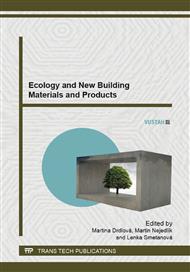p.285
p.289
p.294
p.298
p.302
p.306
p.310
p.314
p.318
Study of Heat Transport in Structure of Concrete
Abstract:
Current trend of construction of ring roads in large cities going often underground emphasizes safety of implementation and using of such constructions, which is closely connected to possible risks of a fire in these predominantly monolithic structures made from steel reinforced concrete. The paper gives results of the research focused on thermally-technical properties of cement based composite materials resistant to high temperature suitable for application in places with higher risk of fire, like secondary lining of tunnels or underground car parks. The aim was verification of appropriateness of testing mix-designs for application in structures possibly endangered by fire.
Info:
Periodical:
Pages:
302-305
Citation:
Online since:
August 2014
Authors:
Price:
Сopyright:
© 2014 Trans Tech Publications Ltd. All Rights Reserved
Share:
Citation:


